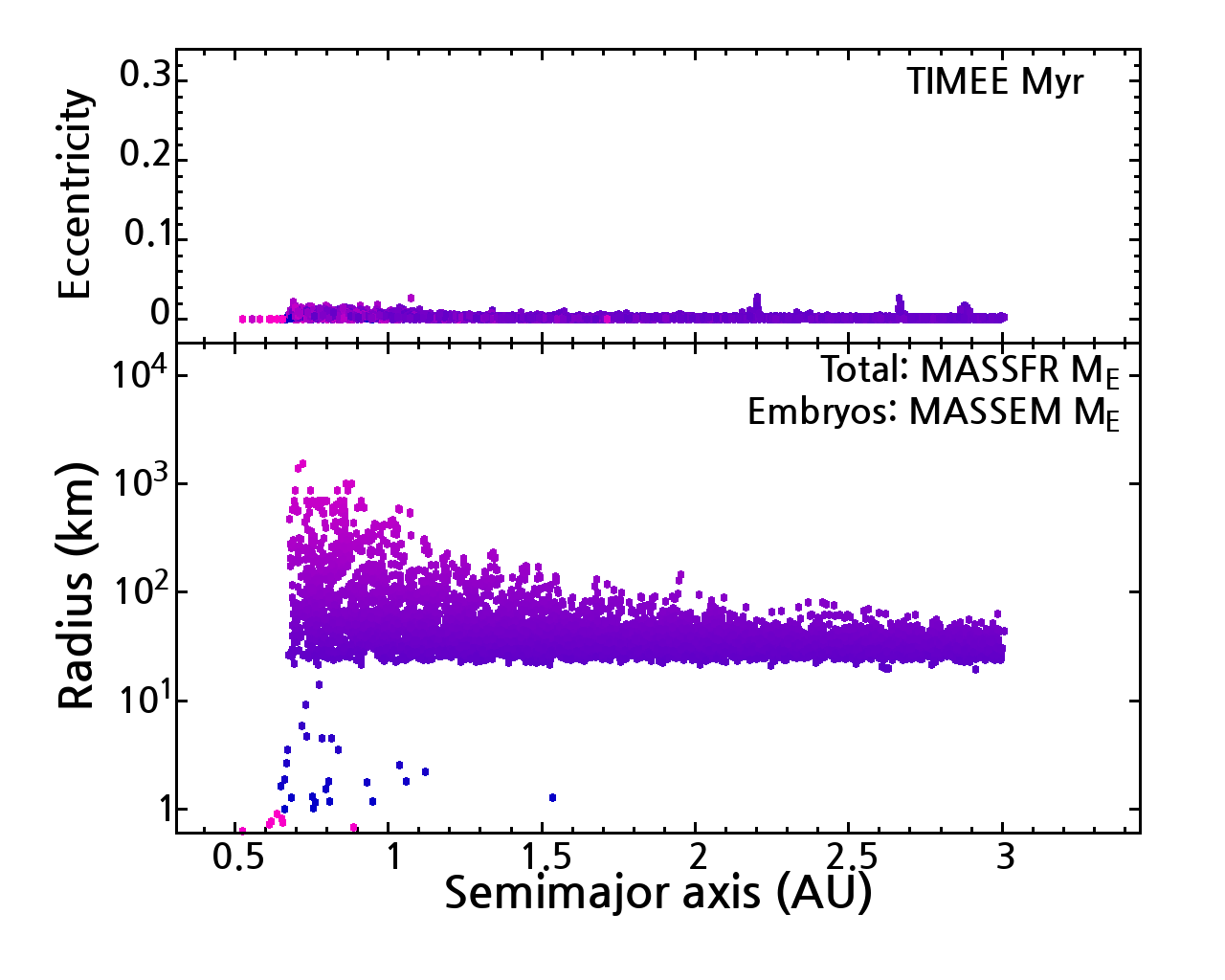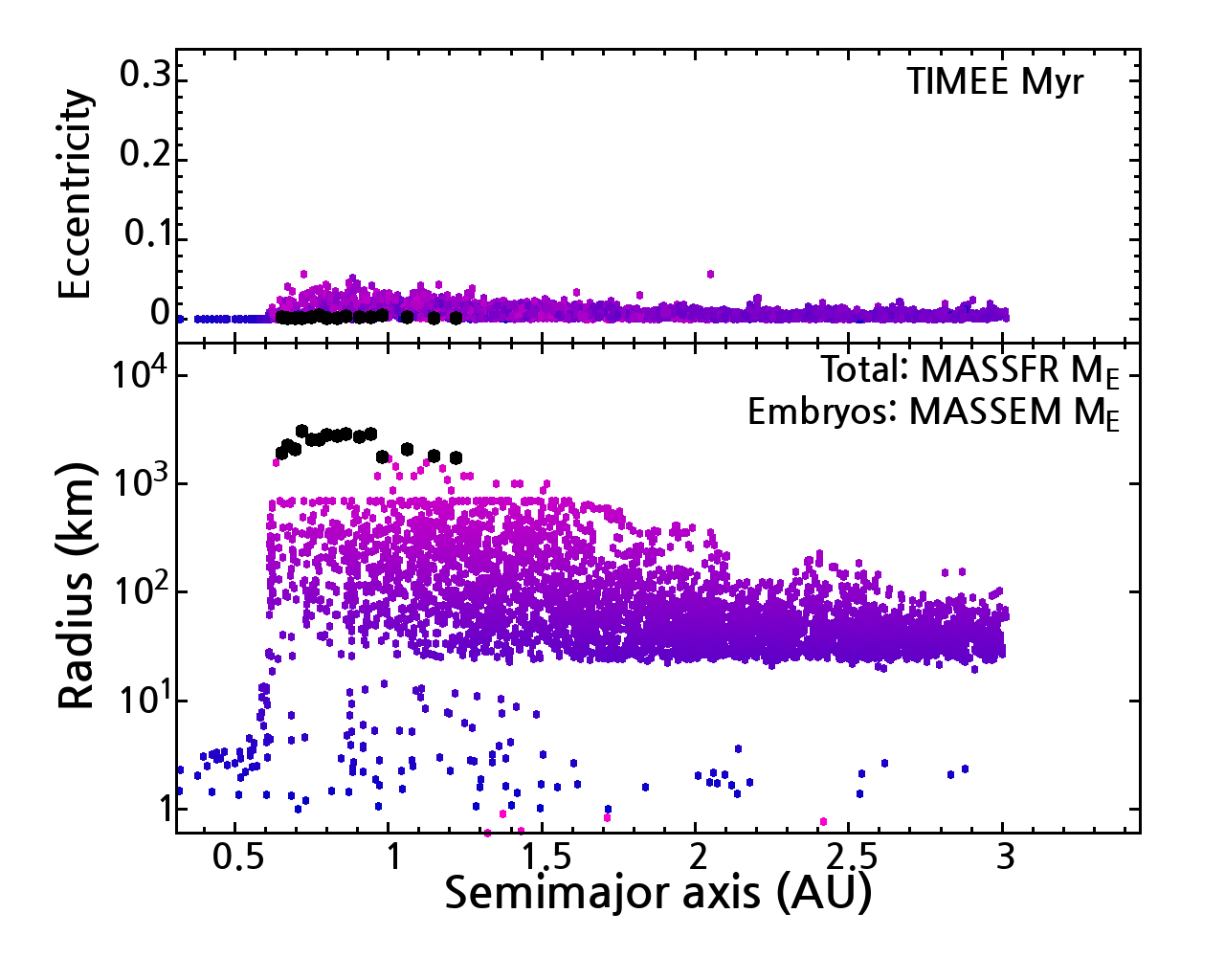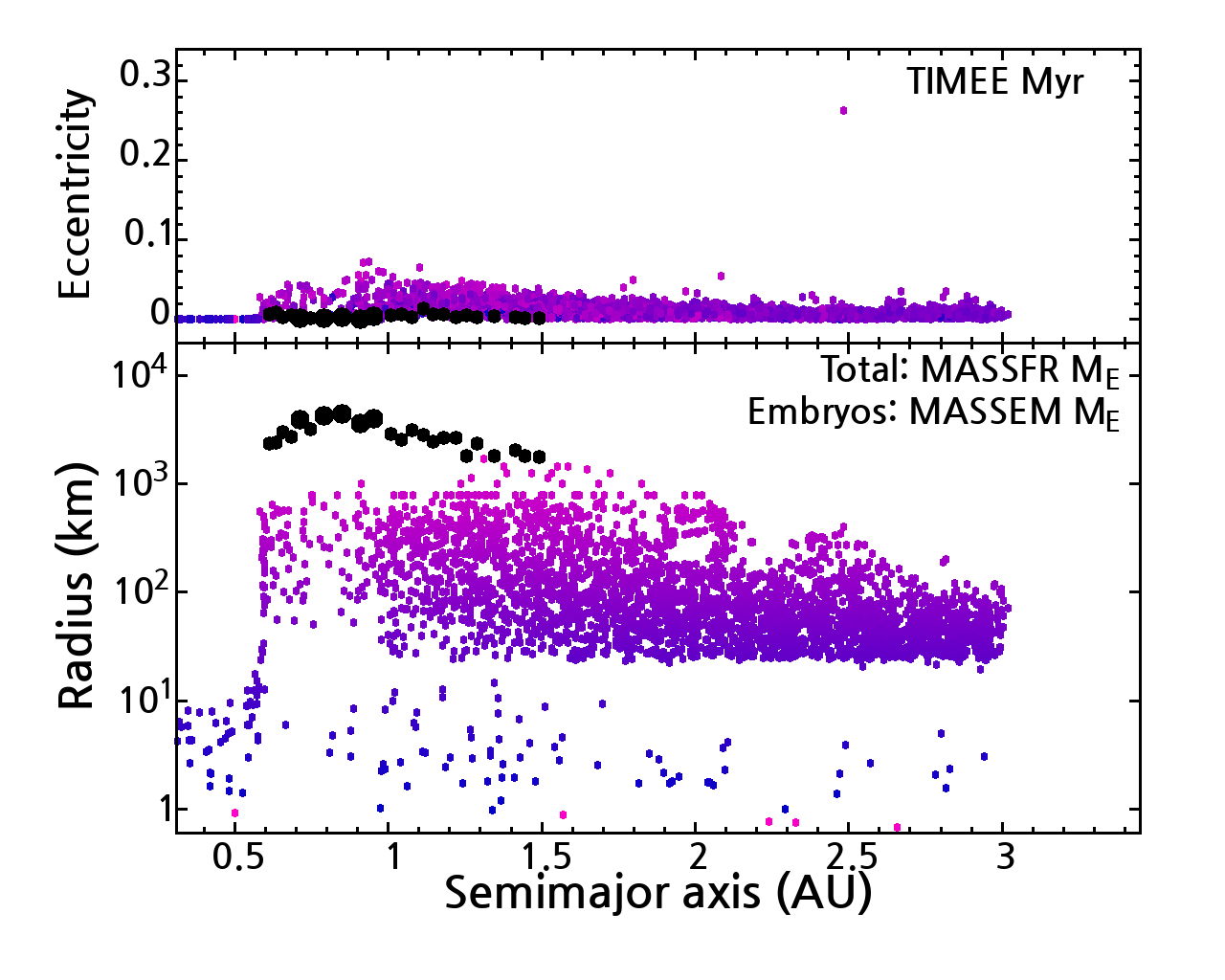Terrestrial Planet Formation in LIPAD
This page provides the outputs for LIPAD simulations of terretrial planet formation for general use (see Levison et al. 2012 for more LIPAD information). The simulation(s) presented are nominal scenarios published in Walsh and Levison 2018 (in prep.). They are 1xMMSN for gas and solids, 2Myr exponential gas disk density decay, 30km initial planetesimal radius, 3gcc planetesimal density, aerodynamic gas drag, type I eccentricity damping on embryos, with particle removal at radius below 1m.
Nominal Simulation States
Here is a dump (38Mb) of simulation outputs over time, labeled laboriously with the times, and times included along with number of particles in the first row of the data file. Rows 2-nparticles each have 10 columns: 1) particle number, 2) semimajor axis in au, 3) eccentricity (0-1), 4) inclination (deg), 5-7) angles (deg), 8) mass in Solar Masses/(4*pi*pi) 9) radius in kilometers.
HOW TO INTERPRET TRACER PARTICLES. Note that there are particles that are tracers, which represent a large number of smaller bodies, and that there are embryos. Tracers all have a mass of 8.1034372101385088E-08, but can have a range of radii. Thus one can determine the number of particles represented by calculating the number of bodies with this radius that would sum up to the total tracer mass.
Here is a 2x MMSN run, with otherwise identical properties (tracer mass has changed).
|
Here is the data from 100,000 years.
|
 |
|
Here is the data from 1 Myr.
|
 |
|
Here is the data from 2 Myr.
|
 |
